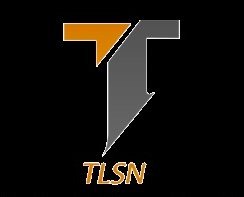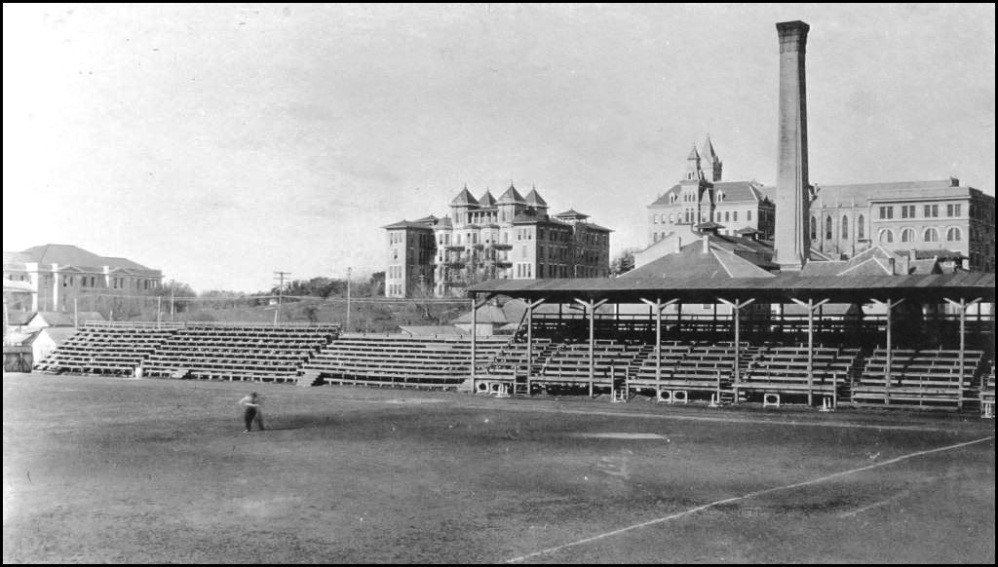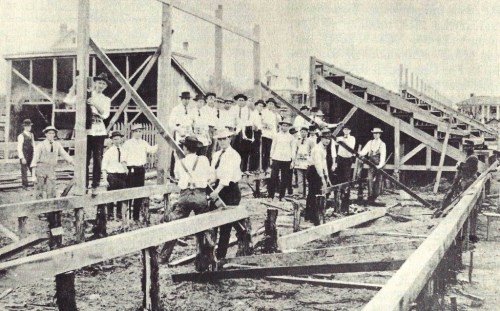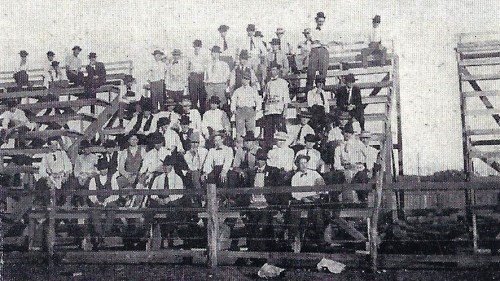There have been three athletic facilities on the campus named for the university's influential early leader James Benjamin Clark.
Clark Field #1
The first Clark FIELD OPERATED from 1887 through 1927 at the southeast corner of 24th Street and Speedway.
In 1898 this location had no name. After the landowners threatened to evict “Varsity” from the property, money was raised to build a board fence.
In 1904, the field was named after the librarian, registrar, groundskeeper, Dean of Students, proctor, secretary of faculty, business manager, and Regent James Clark. In his spare time he planted trees around the campus.
There were no bleachers, just an open lot with a barbed wire fence separating the fans from the playing field.
Each spring, the east side bleachers would be transported to the north end zone to make room for baseball.
In 1907 the plan was to increase the seating capacity from 500 to 2000 seats.
Bleacher Badge
To fund the project, 662 bleacher badges were sold at 50 cents apiece, $325 dollars was received for the banner, and the UT Athletic Association helped bring the grand total to $788.
On Nov. 21st, construction began. Six days later, the bleachers were completed. An estimated 5,000 fans attended the Texas- A & M game and 2000 had seats.
The Horns played at Clark Field until 1924
The west stands were covered in 1912, a “press box” built on the roof, and north and south seats were added. More than 18,000 fans attended the 1920 Texas vs. A & M football game, at the time a record crowd for the South.
CLARK FIELD #2
1938 team photo with Billy Goat Hill in the Background
Clark Field was unusual because there was a 12- to 30-foot limestone cliff that ran from left-center to center field that making playing the outfield adventurous. The cliff could only be accessed via a goat path. Centerfield was nicknamed "Billy Goat Hill." There was a scoreboard on top of the hill in the field in front of the fence that could cause even more weird bounces for outfielders.

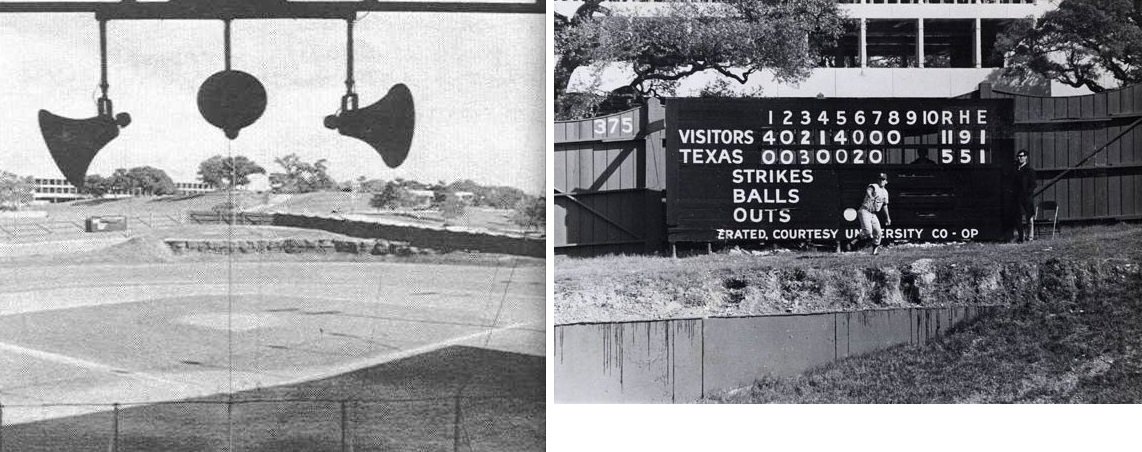
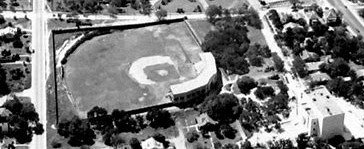
The second and best-known Clark Field and the one that Professor Carlson remembers in an article he wrote about attending the park as a college student ( see link https://texas-lsn.squarespace.com/basebal-clark-field) was part of Longhorn sports history from 1928 to 1975. The stadium only seated 2,000.
Clark Field was unusual because there was a 12- to 30-foot limestone cliff that ran from left-center to center field that making playing the outfield adventurous. The cliff could only be accessed via a goat path. Centerfield was nicknamed "Billy Goat Hill." There was a scoreboard on top of the hill in the field in front of the fence that could cause even more weird bounces for outfielders.
THE THIRD CLARK FIELD
In 1975 the baseball team moved to their new ballpark and Freshman Field was renamed Clark Field. In the 1980s and 1990s, the Clark Field property underwent significant redevelopment, but a portion of the field was retained as Clark Field, a roughly oval-shaped field surrounded by a track near Jester Circle.
